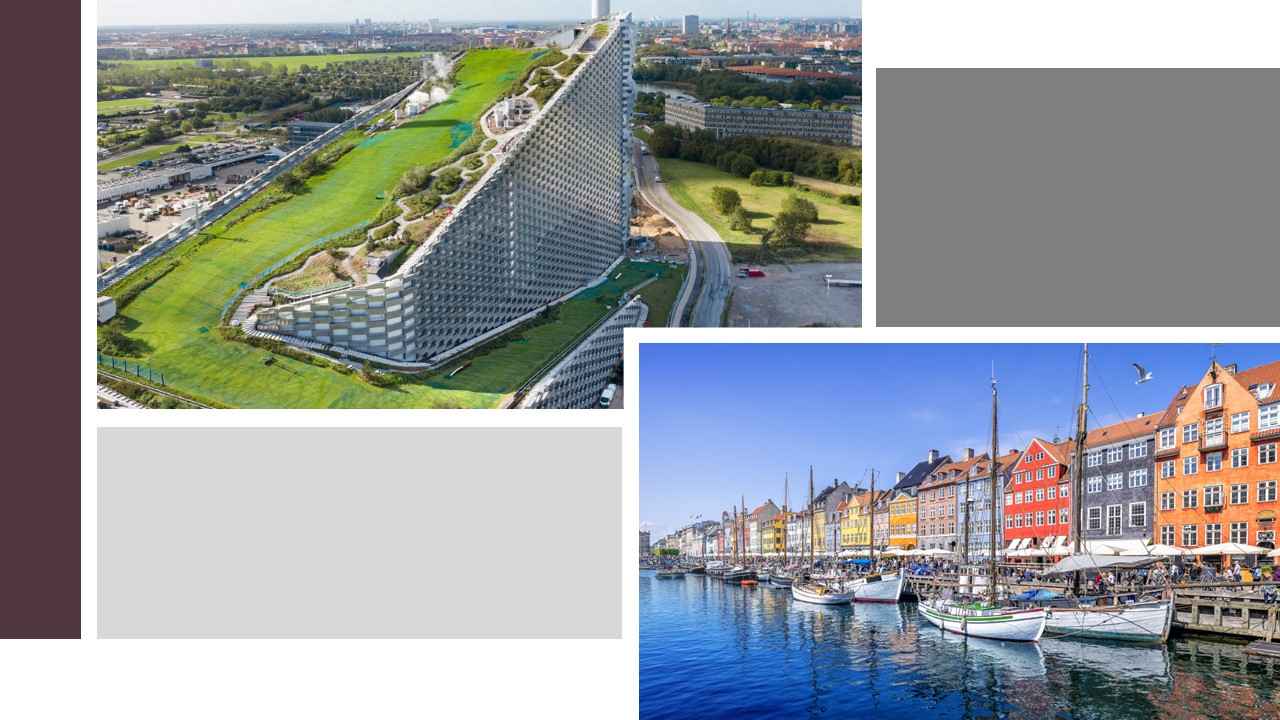Sustainable City Planning in Copenhagen, Denmark
- By
- Pooja |
- May 26, 2023 |
- Civil Engineering,

Table of Contents
Bike-Friendly Infrastructure and Green Initiatives:
Copenhill: Innovative Waste to Energy Plant with a Ski Slope:
Innovative Urban Design for Livability:
Amager Bakke: Combining Waste Management and Recreational Facility:
Climate-Resilient Infrastructure and Green Roofs:
Copenhagen, the capital city of Denmark, is renowned for its sustainable city planning initiatives that prioritize environmental friendliness, livability, and innovation. The city has implemented various strategies to promote a bike-friendly infrastructure and green initiatives, making it a global leader in sustainable transportation.
Bike-Friendly Infrastructure and Green Initiatives:
Copenhagen is known for its cycling culture, with a strong emphasis on promoting biking as a primary mode of transportation. The city boasts an extensive bike lane network, making it safe and convenient for residents to commute on two wheels.
Bicycle-friendly policies, such as priority at traffic lights and ample parking facilities, encourage more people to choose cycling as their preferred mode of transportation.
This focus on biking not only reduces carbon emissions and traffic congestion but also promotes a healthier and more active lifestyle among the city's residents.
Copenhill: Innovative Waste to Energy Plant with a Ski Slope:
Copenhill, also known as Amager Bakke, is a groundbreaking waste-to-energy plant in Copenhagen. This innovative facility not only processes waste and generates electricity but also features a ski slope on its roof, providing recreational opportunities for residents and visitors. Copenhill serves as a prime example of combining waste management with sustainable urban design, transforming an industrial facility into a multifunctional space that contributes to the city's energy needs while also providing leisure and recreational activities.
Innovative Urban Design for Livability:
Copenhagen is dedicated to creating urban spaces that enhance livability and promote community engagement. Superkilen Park is a prime example of innovative urban design that celebrates diversity and multiculturalism.
The park features distinct sections representing various cultures from around the world, creating a vibrant and inclusive public space. It serves as a gathering place for residents and visitors, offering amenities such as playgrounds, sports facilities, and picnic areas.
Superkilen Park encourages social interaction, cultural exchange, and a sense of belonging, enriching the city's social fabric.
Read More:
Amager Bakke: Combining Waste Management and Recreational Facility:
Amager Bakke, also part of the Copenhill project, is a remarkable example of how urban infrastructure can be repurposed to serve multiple functions. As a waste-to-energy plant, it efficiently converts waste into electricity.
However, it goes beyond its primary purpose by integrating a recreational facility into its design. With a ski slope, hiking trails, and climbing walls, Amager Bakke provides residents and visitors with opportunities for outdoor activities while also serving as a symbol of sustainability and environmental consciousness.
Copenhagen's sustainable city planning efforts have positioned it as a global leader in urban sustainability and livability.
Through its bike-friendly infrastructure, green initiatives, innovative waste-to-energy plants, and urban design that promotes inclusivity and community engagement, the city has successfully created a harmonious balance between environmental preservation and quality of life for its residents.
Copenhagen's approach to sustainable city planning serves as an inspiration for other cities worldwide, showcasing the possibilities of creating cities that are not only environmentally friendly but also enjoyable and enriching for its inhabitants.
Superkilen Park:
Multicultural Public Space Celebrating Diversity: Superkilen Park exemplifies Copenhagen's dedication to creating inclusive and vibrant public spaces. Designed in collaboration with residents, the park represents different cultures from around the world, showcasing diverse art installations, playgrounds, and recreational areas.
Superkilen Park promotes social integration and cultural exchange, providing a welcoming environment for people of all backgrounds. It serves as a gathering place where residents can connect and engage in various activities, fostering a sense of community and well-being.
Climate-Resilient Infrastructure and Green Roofs:
Copenhagen is actively investing in climate-resilient infrastructure to mitigate the effects of climate change. The city has implemented green roofs on buildings, which not only enhance the aesthetic appeal but also provide insulation, reduce stormwater runoff, and improve air quality.
Green roofs contribute to urban biodiversity by creating habitats for plants and animals, as well as reducing the urban heat island effect. Copenhagen's emphasis on green infrastructure showcases its commitment to sustainable urban development and climate adaptation.
Renewable Energy Transition:
Copenhagen is at the forefront of the renewable energy transition, aiming to become carbon neutral by 2025. The city has made significant investments in renewable energy sources such as wind turbines, district heating systems, and solar power. By reducing reliance on fossil fuels and embracing clean energy solutions, Copenhagen is setting an example for other cities worldwide on how to achieve sustainable energy systems and combat climate change.
Copenhagen's sustainable city planning strategies demonstrate a holistic and integrated approach to urban development. Through initiatives like bike-friendly infrastructure, innovative waste-to-energy facilities, multicultural public spaces, climate-resilient infrastructure, and renewable energy transitions, the city has become a global leader in sustainable urbanization.
Copenhagen serves as an inspiration for cities around the world, showing that it is possible to create environmentally friendly and livable cities while prioritizing the well-being of residents. The city's commitment to sustainability not only benefits the environment but also enhances the quality of life for its inhabitants, making it a model for sustainable urban development.
Please feel free to like, share and comment.
Admin, gcelab.com Please see our Pillar Post to know why we founded gcelab.com.
Read More:
-
What are As-Built Drawings in Construction? 6 Important Points
-
30 Most demanding and useful design software for Civil Engineers

Pooja
Founder at gcelab.com, Pooja is an Entrepreneur unlocking human potential. Working in the Principles of Lean Start-up, Pooja believes in Transparency and User Happiness the most. Pooja’s background in teaching gives her a sophisticated grasp on even the most tedious aspect of course building. She is passionate about people who believe that good is not enough.



